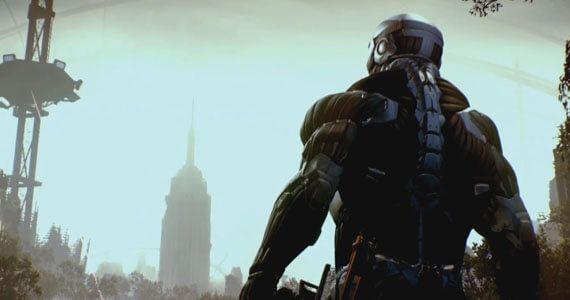Crytek Studios has made its name on the traditional boxed video game format. The German-based developer created CryEngine in 2002, and its various iterations have since powered games like Far Cry, Crysis, and Crysis 2 to considerable critical and commercial success.
Be that as it may, the company's schedule gets a little lighter after the trilogy-concluding release of Crysis 3 (powered by CryEngine 3) in February of 2013, and a recent interview is shedding light its drastically different outlook for creating games in the coming years.
Cevat Yerli, Crytek CEO and one of the three brothers who founded the studio in 1999, laid the future strategy straight on the table when he spoke recently with VideoGamer. He declared that all future projects incepted by the company - while maintaining a standard of triple-A production values - will adopt the free-to-play format and run on Crytek's new social gaming platform, GFACE.
"As we were developing console games we knew, very clearly, that the future is online and free-to-play.
"Right now we are in the transitional phase of our company, transitioning from packaged goods games into an entirely free-to-play experience.
"What this entails is that our future, all the new games that we're working on, as well new projects, new platforms and technologies, are designed around free-to-play and online, with the highest quality development."
Yerli goes on to phrase this "highest quality development" in terms of the budget his studio aims to throw at each game - a range between $10-30 million. It's an important contrast to a free-to-play game like, say Team Fortress 2, which is designed around one specific facet - multiplayer - and wouldn't be practical selling at a $60 retail price: Essentially, Crytek isn't trying to change its console game design tropes - the big-idea storytelling, the high-grade graphics and gameplay. Instead, they see video games as changing from consumer product to consumer service, and they intend to embrace the shift wholeheartedly.
It's also worth mentioning, then, that Yerli has an apparent disdain for companies like Activision and EA - particularly with regards to their pricing strategies for post-release content (Activision with Call of Duty Elite and EA with Battlefield Premium):
"If you look at what kind of games are done in the packaged goods market, with DLCs and premium services and whatnot, it's literally milking the customers to death."
There's no question that Call of Duty and Battlefield have both begun to resemble a free-to-play title with their service-style payment options in exchange for new content. The difference, obviously, is the $60 price tag on the front of the box. Yerli didn't detail what FTP Crytek games would offer in terms of paid content, but his comments give off the strong impression of a middle ground - somewhere between paying for map pack after map pack after weapon skin, and paying for map pack after map pack after weapon skin after a disk and an online pass.
As dramatic a marketing sea change as the overhaul will be, it won't happen overnight; the studio is still under contract to develop Homefront 2 for publisher THQ, Ryse for Microsoft, and the aforementioned Crysis 3 for EA (Yerli's DLC and premium service angst notwithstanding).
At the same time, though, a prelude to Crytek's future can be seen in its first free-to-play offering, Warface. Available in Russia and China, the near-future military FPS is developed by Crytek Kiev, and the company has expressed interest in bringing it further West.
Ranters, slowly but surely more console games are gravitating towards the free-to-play model - Killzone 3 and DUST 514 being primary examples. Will the next generation see more developers go the way of Crytek, staking entire studios on it? Are video games as a whole destined to become ongoing services instead of standalone products?
-
Follow me on Twitter @Brian_Sipple.
Source: VideoGamer

